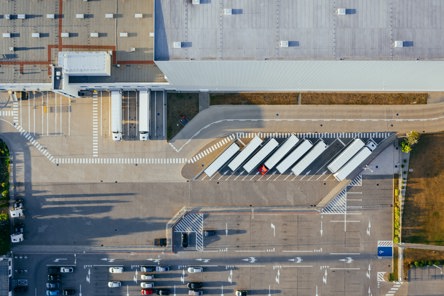Logistics is facing a catch-22. On the one hand, operations need to be more efficient and faster than ever. On the other, consumers and regulatory bodies are demanding more sustainable practices.
Companies are being pulled in two directions. At the same time, their waste is rising, returns management is becoming more complex, and environmental issues are more pressing.
This is where the circular economy comes into the fold. This approach reimagines how businesses manage resources by focusing on reuse, repair, and recycling. Reverse logistics plays a key role in making this shift practical. The result? Lower costs, a reduced environmental impact, more straightforward compliance, and happier customers.
Let's explore how the circular economy in logistics can help you achieve your goals.
The Circular Economy in Logistics
The circular economy in logistics is about cutting down on waste and optimizing resource use. Instead of a linear "make, use, dispose" model, it extends product lifecycles through reuse, repair, and recycling. This strategy helps reduce pollution, conserve materials, and create sustainable supply chains.
Here at SEKO Logistics, we incorporate circular economy principles into our eco-friendly logistics solutions. Initiatives like low-waste packaging and intelligent recycling systems help our clients secure circular supply chain optimization that benefits their business's bottom line—and the environment.
Circular Economy and Reverse Logistics Sustainability
What about reverse logistics? How does this practice fit into the broader circular economy system?
It's about efficient returns management, focusing not just on getting the product from the warehouse to the customer but also the opposite. With the right approach, companies can recover and reuse valuable materials and lower their waste production.
Sustainable reverse logistics practices also extend product lifespans and reroute waste away from landfills. We have built a streamlined returns process that enables our clients to build a resource-efficient logistics system that aligns with their values and environmental goals.
How Reverse Logistics Reduces Environmental Impact
Sustainable returns management is at the core of reducing waste. Reverse logistics ensures products are reused, repaired, or recycled instead of discarded. Efficient sorting and processing of returns reduce the strain on landfills and conserve resources. This helps cut carbon emissions. When returns are consolidated, transportation can be optimized. This lowers the overall cost of return shipping, which reduces the environmental impact of logistics.
At SEKO, we leverage these strategies to create green logistics solutions that don't compromise on speed or service quality. We also adopt waste reduction strategies that empower our clients to make sustainability a competitive advantage and a differentiator that maintains or even increases profitability.
Top Challenges and How to Overcome Them
Adopting circular economy best practices and sustainable reverse logistics can help your company meet evolving consumer expectations. However, with change comes challenges. Here are some of the most common—and how to overcome them:
-
Returns can be complex, particularly if you ship worldwide. You need a robust system that processes and sorts items. It should also categorize returns into groups for recycling, reselling, or refurbishing.
-
Speaking of recycling, your program is only as effective as the infrastructure you have access to. Many regions lack the technology to repurpose a wide variety of materials.
-
Collaborating across the supply chain can be difficult enough as it is. Add to that varying commitments to sustainability, and you have a significant obstacle to overcome. You must work with suppliers, distributors, and logistics providers who are aligned with your goals.
How can you overcome these challenges?
The first step is to integrate your technology. Use advanced tracking systems and data for 360-degree visibility over your supply chain—including reverse logistics. You might leverage:
-
Data analytics to identify returns patterns, optimize routes, determine the efficacy of your recycling program, and even predict demand for refurbished products.
-
Automation to speed up the sorting and processing of returned goods.
-
Blockchain to deliver full transparency and ensure accountability is baked into the supply chain.
The next—and perhaps most crucial—step is to form strategic partnerships with like-minded providers. Here at SEKO, we are firm believers that companies have the power to make positive change. We help our clients move toward green logistics strategies by providing the expertise, experience, and infrastructure.
How SEKO Logistics Can Help You Achieve Circular Supply Chains
The right partner can help you achieve your goals. If you value sustainability and want to bring circular economy practices into your logistics strategy, SEKO is ready to help. We offer:
-
An eco-friendly supply chain and returns that reduce waste and lower your carbon emissions
-
Effective and practical recycling programs
-
Responsible waste disposal and waste reduction strategies
-
Green logistics strategies that optimize transportation routes
-
Advanced technology and a global network to make it all happen
What's more, our circular supply chain management expertise makes transitioning to a more sustainable model easier than you might think. Our end-to-end service improves efficiencies, boosts sustainability, and reduces your business's environmental impact without compromising on performance.
Become a first-mover in your industry and lead by example. Do what's best for the environment, your customers, your community, and your business. Embrace green logistics solutions and meet the growing demand for sustainability.
Partner with SEKO today. Get in contact with our team, and let's discuss your needs. The future looks bright.





